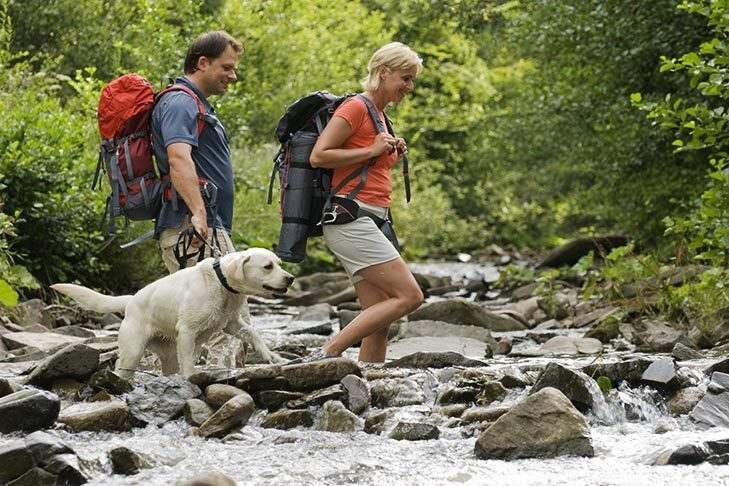Just as summer brings warmer weather, it also invites you and your furry friend to explore the great outdoors together. To ensure your hikes are safe, enjoyable, and enriching for both you and your dog, it’s imperative to adopt some savvy strategies. In this post, you will discover five smart steps that will elevate your summer hiking experience with your canine companion, allowing you to make the most of your adventures in nature. With a little preparation, you can create unforgettable memories while keeping your dog happy and healthy.
Tailoring Your Trail: Choosing Dog-Friendly Hikes
Selecting the right trail for a hike with your dog ensures a safe and enjoyable experience for both of you. Look for dog-friendly parks and nature reserves that welcome pets, feature designated trails, and maintain clear regulations. Websites and apps like AllTrails often provide filters for pet-friendly routes, helping you discover new places that accommodate your canine companion.
Identifying Suitable Terrain and Length
Consider your dog’s breed, fitness level, and experience when selecting trail terrain and length. Shorter, flatter trails suit younger or less active dogs, while more adventurous pets might thrive on longer, more challenging hikes. Measuring the distance based on your dog’s endurance will help prevent exhaustion and keep both of you happy during your outing.
Assessing the Weather and Environmental Conditions
Monitoring weather conditions prior to your hike is crucial for your dog’s safety. Hot temperatures can lead to overheating, while rain or snow might create slippery or unsafe trails. Check the forecast and adjust your plans accordingly. A temperature greater than 85°F can be dangerous for some breeds, especially those with short noses or thick fur. Always ensure your dog stays hydrated and take breaks in shaded areas to recharge.
When assessing the weather, pay attention to humidity levels, which can significantly affect how your dog handles heat. High humidity, combined with high temperatures, poses a risk for heat-related issues. Additionally, if thunderstorms are on the horizon, consider rescheduling your hike, as sudden weather changes can cause anxiety and danger for both you and your pooch. Always plan your trail selection with weather in mind to ensure a safe and enjoyable hiking experience.
Essential Gear for Canine Companions
Equipping your dog with the right gear enhances both safety and enjoyment on the trails. From protective items to hydration tools, the right supplies can make a significant difference in your outdoor adventures. Tailoring this gear to your dog’s size, activity level, and the environment ensures that they remain comfortable and secure throughout the hike.
Must-Have Supplies for Safe and Enjoyable Hikes
To set your dog up for success during hikes, a few vital supplies go a long way. A sturdy leash, a well-fitted collar, and identification tags should always be part of your kit. Additionally, to address their needs on the go, pack portable water bowls, dog-friendly snacks, and a first-aid kit specifically designed for pets. With these supplies in hand, you can focus on the adventure ahead with confidence.
Outfit Your Dog: Harnesses, Booties, and Hydration
Choosing the right gear to outfit your dog is vital for enjoying summer hikes comfortably. A proper harness allows for better control and reduces strain on the neck, making it ideal for energetic pups. Booties protect their paws from rough terrain and hot ground, while carryable hydration packs enable you to ensure your furry friend stays well-hydrated, especially on long trails.
Consider investing in a well-designed harness that distributes pressure evenly across your dog’s body, which is particularly beneficial for larger breeds. When fitting booties, ensure they have a snug but comfortable fit to prevent slipping, and check their durability; some are specifically made for rocky terrain or hot summer days. Hydration options can range from portable collapsible bowls to specially designed backpacks equipped with water bladders, ensuring your dog stays refreshed on the trail. These thoughtful choices not only enhance your dog’s outdoor experience but also boost their endurance and enjoyment during your summer hikes together.
Navigating Trail Etiquette with Your Dog
Successfully hiking with your dog requires awareness of trail etiquette, ensuring a positive experience for everyone involved. Keeping your dog under control, being mindful of other trail users, and respecting the natural environment are key components of responsible pet ownership on trails. Proper etiquette includes yielding to hikers without dogs, keeping your dog on a leash when required, and picking up after your pet to maintain trail cleanliness. By following these guidelines, you contribute to a more enjoyable hiking atmosphere for all and set a good example for fellow hikers.
Understanding Land Use Regulations and Leash Laws
Awareness of local land use regulations is imperative for sharing trails responsibly with your dog. Many parks and wilderness areas establish specific leash laws to protect wildlife, reduce conflicts with other trail users, and maintain the safety of both pets and their owners. Familiarizing yourself with these regulations ensures you choose appropriate trails and follow the rules set by park officials. Check official websites or visitor centers for detailed information on where dogs are allowed, leash requirements, and designated off-leash areas to plan your hike accordingly.
Respecting Wildlife and Other Hikers
Keeping wildlife safe and ensuring fellow hikers enjoy their experience goes hand in hand with respecting the environment while hiking. Always be mindful that your dog might chase or disturb local wildlife, which can lead to stress not only for animals but for other hikers as well. Keeping your dog on a leash helps prevent unwanted encounters and aids in protecting vulnerable species that call the wild home. Additionally, approaching other hikers with your dog in a controlled manner shows respect, preventing potential conflicts and creating a more harmonious hiking environment for everyone.
Training for the Trail: Skills Your Dog Should Master
Having a well-trained dog enhances the hiking experience for both of you. Equip your furry friend with imperative skills that will keep them safe and ensure smooth navigation in the great outdoors. Key skills include reliable recall, the ability to follow basic commands, and strong socialization skills to handle encounters with other dogs and people on the trail. Training your dog not only boosts their confidence but also fosters a balanced partnership as you tackle various trail conditions together.
Recall and Basic Commands for Safety
Establishing a solid recall command is non-negotiable for any hiking dog. Your dog should respond promptly to their name and commands such as “come,” “sit,” and “stay.” Start training in controlled environments before transitioning to distractions like other hikers or wildlife. When on the trail, this obedience allows for safe exploration while ensuring they remain by your side, particularly in new and stimulating surroundings.
Socialization Techniques for Group Hikes
Effective socialization prepares your dog for group outings, minimizing the risk of anxiety or aggressive behavior. Begin with controlled meet-and-greet sessions with other well-mannered dogs before hitting the trail. Gradually increase interactions in diverse environments to help your dog feel comfortable in a variety of settings. Positive reinforcement can further solidify their good behavior, making future group hikes more enjoyable and stress-free.
Focus on exposing your dog to different dogs, people, and hiking scenarios well before your scheduled hikes. You can arrange playdates with friends’ dogs or participate in local training classes to enhance their comfort in various situations. During group hikes, encourage your dog to engage positively with others by rewarding calm behavior and offering treats when they interact gently. This method not only reinforces good social skills but also builds their confidence, making them a polite companion on future adventures.
Health Considerations for an Active Summer
Your dog’s health is important for an enjoyable summer hiking trip. Before hitting the trails, evaluate their fitness level and consult your veterinarian if you have any concerns. Keeping your dog hydrated during hikes, monitoring their energy levels, and providing appropriate nutrition can help ensure they remain healthy while embracing outdoor adventures. Be aware of the unique challenges that summer brings with elevated temperatures and potential exposure to pests like ticks.
Recognizing Signs of Overheating or Exhaustion
Vigilance is key when it comes to detecting signs of overheating or exhaustion in your dog. Watch for excessive panting, drooling, weakness, or reluctance to continue hiking. If they seem disoriented or you notice bright red gums, these could indicate overheating. Taking breaks in the shade, providing water, and knowing when to turn back can keep your pup safe and comfortable out on the trails.
Preventive Care: Vaccinations and Tick Protection
Protecting your dog starts with ensuring they are up to date on vaccinations and preventive treatments. Vaccines help shield your canine companion from disease, while tick protection helps prevent Lyme disease and other tick-borne illnesses common in outdoor settings. Consider purchasing a veterinary-approved tick preventative and conducting regular checks of their coat after hikes.
Using tick prevention methods like topical treatments, collars, or oral medications can significantly reduce your dog’s exposure to tick-borne illnesses. Vaccinations against rabies, leptospirosis, and bordetella are particularly important for dogs that will be in contact with wildlife or other dogs. Talk to your veterinarian to tailor a health regimen specific to your dog’s needs, particularly before initiateing on those warm summer adventures. Regular check-ups and discussions about yard precautions, such as landscaping alterations to minimize tick habitats, can further enhance your dog’s protection while enjoying the summer outdoors.
Conclusion
Ultimately, by incorporating these five smart steps into your summer hiking adventures with dogs, you enhance not only your experience but also ensure the safety and enjoyment of your furry friend. Prioritizing hydration, selecting proper trails, protecting paws, packing vital gear, and understanding your dog’s limits will contribute to unforgettable memories in nature. As you begin on your next outdoor journey, using these tips will help you create a positive, enjoyable atmosphere for both you and your canine companion.






